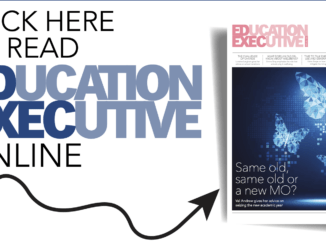
To keep both pupils and staff safe, schools are having to spend money on ensuring they are COVID-secure – but how is the government supporting schools with these additional costs?
Government guidance says schools in England should implement a number of hygiene and safety measures to help stop the spread of COVID-19. These range from staggered class times to the deep-cleaning of buildings and access to hand sanitiser, but all of these additional measures come at a price.
A survey by the National Association of Head Teachers found that many schools have already incurred costs in the period to September, including:
- Two-thirds of schools had paid additional staff costs for cleaning.
- Half of schools were purchasing or renting hand-washing stations.
- Almost all had purchased additional cleaning supplies.
- Around 85% had purchased signage, tape or barriers.
These costs came to an average of £9,990 per school, based on the 1,821 responses received. However, schools also estimate a £16,000 loss of income from sources such as renting rooms or after-school clubs. On top of this, research from the National Foundation for Educational Research (NFER) estimates that the longer-term costs for this academic year could end up being far higher. So, how is the government planning to support schools with all these extra costs?
The government has stated that schools will continue to receive their core funding allocations – as determined by the local authority for maintained schools, and through the general annual grant (GAG) for academies – for the 2020 – 21 financial year (April 2020 to March 2021 for maintained schools and through to August 2021 for academies and non-maintained special schools). This will happen regardless of any periods of partial or complete closure, and will ensure schools can continue to pay staff, and meet other regular financial commitments, as we move through these extraordinary times.
Local authorities will also continue to receive their high needs budgets and should continue to pay top-up, and other high needs, funding to schools. This will ensure that the employment and payment of staff supporting pupils with special educational needs and disabilities (SEND) can continue.
Similarly, where schools pay top-up, or other funding, for pupils attending alternative provision (AP), or pay for other SEND or AP services, the government expects these payments to continue so that teachers and other staff can be paid in accordance with their existing employment contracts.
Any additional funding is not intended to cover any additional costs relating to changes in SEND provision organised by local authorities for individual children and young people with education, health and care plans.
There will be instances where schools face additional costs as a result of the COVID-19 outbreak and will not be able to cover these from their existing resources. In these instances, schools can get funding for additional costs; the eligible items are those which the government judges necessary to allow schools to provide appropriate support to those children attending school during a period of partial closure. Funding is available to schools that are unable to meet such additional costs from their existing resources, or which they could only meet by drawing down reserves and undermining their long-term financial sustainability.
Schools are not eligible to make a claim against this fund if they expect to add to their existing historic surpluses in their current financial year (September 2019 to August 2020 for academies and April 2020 to March 2021 for maintained schools). This means schools cannot claim if they began their current financial year with an accumulated historic surplus and expect to increase that surplus this year and so finish the year with a higher level of reserves than they started with.
Schools are eligible for reimbursement where the additional costs associated with COVID-19 would:
- result in a school having to use historic surpluses;
- increase the size of a historic deficit;
- prevent the planned repayment of a historic deficit.
The government are asking schools to make the necessary payments from their existing budgets and record these in line with local finance policies. See guidance on claiming exceptional costs associated with COVID-19 for instructions on how to submit a claim.
The government will make payments – direct to academies, or to local authorities to pass onto their schools – to reimburse schools for costs they apply for, up to the given funding limits . It is possible to claim for:
Increased premises related costs , including utilities and resources needed to keep the school open, such as hygiene services, associated with keeping schools open during the Easter and/or summer half term holidays for vulnerable children and the children of critical workers, over and above the costs that schools would have faced in other circumstances.
Support for free school meals for eligible children who are not attending school, where those costs are not covered by the national voucher scheme – this covers:
- costs to schools arising before the introduction of the national voucher scheme;
- costs where schools are providing free meals to children for whom the national voucher scheme is inappropriate – for example, because there are no participating supermarkets locally, or schools are providing meals directly. Schools can only claim through this fund for free school meals provided over Easter and summer half term holidays, where it was required because local supermarkets were not yet part of the national scheme.
Additional cleaning required due to confirmed, or suspected, COVID-19 cases, in line with COVID-19: cleaning of non-healthcare settings, over and above the cost of existing cleaning arrangements.
With budgets having to stretch more than ever, it is imperative that schools access the additional payments they are eligible for – a little much-needed support them in these challenging times.



Be the first to comment